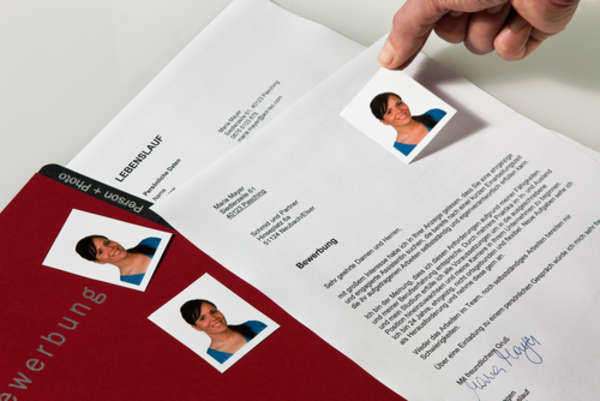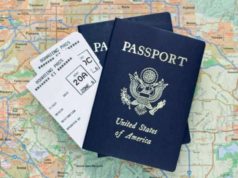
Passport is an essential document for those who wish to travel internationally. It is a government-issued document that serves as proof of identity and citizenship. A passport is valid for a certain period and must be renewed when it expires. However, there may be instances wherein the information contained in the passport needs to be corrected or changed. This can be due to various reasons such as misspellings, change in name, or incorrect data. In this article, we will provide a detailed guide on how to make changes or corrections to a passport.
Types of Corrections or Changes
Before discussing the step-by-step process of changing or correcting passport information, it is essential to understand the different types of corrections or changes that can be made. These are the following:
1. Spelling Correction
One of the most common reasons for making changes to a passport is spelling corrections. It could be a misspelled name or an incorrect spelling of a place of birth. These errors can be corrected by submitting the necessary documents and paying the required fees.
2. Change in Personal Details
There may be instances where an individual needs to change their personal details on their passport due to circumstances such as marriage, divorce, or adoption. This requires submitting relevant documents such as a marriage certificate or court order.
3. Change in Appearance
Another reason for making changes to a passport may be due to a change in appearance. This is common for individuals who have undergone significant physical changes such as weight loss, facial surgery, or gender reassignment.
4. Correction in Passport Information
There may be errors in the information contained in a passport that needs to be corrected, such as incorrect birthdate or nationality. These errors can be corrected by submitting the necessary documents.
Step-by-Step Process for Changing or Correcting Passport Information
Now that we’ve identified the types of corrections or changes that can be made to a passport let’s dive into the step-by-step process of how to change or correct passport information.
Step 1: Determine the Type of Correction or Change Needed
The first step in changing or correcting passport information is to determine the type of correction or change required. This will depend on the reason for the change and the specific details that need to be updated. Once identified, the necessary documents need to be prepared.
Step 2: Prepare the Required Documents
The documents required for correcting or changing passport information will depend on the specific correction or change needed. Below are some examples of documents that may be required:
– Original passport
– Passport application form
– Supporting documents such as a marriage certificate, court order, or adoption certificate
– Proof of identity such as a driver’s license or national identity card
– Proof of citizenship such as a birth certificate or certificate of naturalization
Step 3: Fill Out the Passport Application Form
Once the necessary documents are prepared, the next step is to fill out the passport application form. The form can be obtained from the government website or the nearest passport office. The application form must be filled out accurately and completely to avoid any delays in the process. It is essential to ensure that the information provided in the application form is consistent with the supporting documents.
Step 4: Submit the Application and Supporting Documents
After completing the passport application form, it is time to submit the application and supporting documents. The application can be submitted in person at the nearest passport office or through mail. It is important to note that the fees for correcting or changing passport information may vary depending on the type of correction or change that is required.
Step 5: Wait for the Passport to be Processed
After submitting the application, it is time to wait for the passport to be processed. The processing time can vary depending on the country, but it usually takes around four to six weeks. It is essential to check the status of the application regularly to ensure the processing is on track.
Step 6: Receive the New Passport
Once the passport has been processed, the applicant will receive the new passport. The new passport will contain the corrected or changed information. It is important to verify that all the information in the new passport is accurate before using it for international travel.
Tips for Changing or Correcting Passport Information
Here are some helpful tips to consider when changing or correcting passport information:
1. Review the Information in the Current Passport
Before starting the process of changing or correcting passport information, it is important to review the information in the current passport to ensure the accuracy of the information. This will help avoid potential issues or delays in the application process.
2. Submit the Correct Supporting Documents
Submitting the correct supporting documents required for the correction or change needed is critical to the application process. Submitting the wrong documents can lead to the rejection of the application or delays in processing.
3. Apply Early
Applying early for corrections or changes in passport information is highly recommended, especially when there is an upcoming international trip. Waiting until the last minute can lead to delays or the inability to travel.
4. Check Processing Times
It is essential to check the processing time for the different types of corrections or changes required before submitting the application. This will give applicants an idea of how long the process will take and allow for planning accordingly.
Conclusion
Correcting or changing passport information can seem like a daunting task. However, with proper planning and preparation, it can be done quickly and efficiently. It is crucial to determine the type of correction needed, prepare the necessary supporting documents, and fill out the passport application accurately. Following these steps and tips can help make the process of correcting or changing passport information as smooth as possible.
Passports contain information that assists border patrol in immediately identifying the passport holder, including their citizenship status. Before border patrol even opens the passport, they can tell the passport holders country of citizenship, as each country has a unique and distinct passport.
The inside of the passport will include information such as legal name, and the pages will contain information such as countries the individual has traveled to. When individuals receive their passport, they are responsible for checking it carefully for any possible errors. The error may have been due to inaccurate statements on the passport application, or unreadable handwriting.
It is also possible that the application contained conflicting information or it could also be possible that passport errors could be caused by employees at the passport agency. In either case, passport holders must return passports that contain errors, so that the can be issued a new one. In the past, passport agencies would simply amend passports and return them to the owner with any corrections. However, passport laws no longer allow that practice.
Instead, new passports are issued to replace the passport that had the errors. There is no fee for fixing errors on passports, unless the passports need to be expedited. Possible scenarios which involve the possibility of needing a new passport include, legal name change, errors on vital facts and the addition of blank passport pages.
Name Change:
When individuals go through a legal name change, they must have that change reflected on all legal forms of identification, including their passport. Citizens generally have a specific time limit during which they must have their name changed on all legal documents. If the name change has taken place less than a year from original passport issue, there is no fee associated with changing the name on the passport.
That leeway is granted because some people may get their passport to go on their honeymoon, but change their name after the marriage has taken place. In this way, they can utilize the passport with their maiden name for the honeymoon, but can have it replaced with their new name, free of charge. However, if more than a year has passed since the issue date on the passport, the applicant will be required to pay the new passport fee. In order to have the name change reflected on their passport, citizens must provide legal proof of their name change. For example, a women may get a passport to go on her honeymoon.
After the marriage takes place, she has decided to take her husbands last name. When she returns to the United States after the honeymoon, she can have her passport changed to reflect her new name, free of charge. In order to have her new name reflected on her passport, she would be required to provide an original marriage certificate, which would be returned with the new passport. In some cases, she may have to wait awhile to receive an original marriage certificate, so she will not be able to change her name on any legal documents until she receives the original marriage certificate.
Those that do not have legal proof of a name change, may be able to have it changed after they have utilized their new name for five years, and have proof of that fact. They would have to pay a background search fee of sixty dollars, in order to confirm their new name. In fact, any citizen that is unable to provide proof of facts on their citizenship or legal name, is able to have the passport agency conduct a search, which should help to provide the necessary proof. If they are unable to locate proof, the individual may not be able to get a United States passport.
Corrections:
Previous to strict new passport laws, American citizens could simply have their passport amended if there were any errors, or a legal name change for the passport holder. However, amendments are no longer allowed on United States passports. Instead, changes made to passports require that a new passport be issued. Citizens that notice errors on their passport, should report those errors right away.
In addition, they should be sure that they have proof of the correct information, so that the passport agency can issue their new passport. Citizens should not attempt to utilize a passport containing errors to travel internationally, or even as a form if ID.The passport agency will expedite new passports for citizens that received a passport containing errors. In fact, those passports often receive priority, as not to delay a citizens travel plans. Situations like this are a good example of the necessity of applying for a passport well in advance of any planned trips.
Generally, American citizens need at least four to six blank pages in their passport, in order to travel internationally. Each airline has specific requirements for the amount of necessary blank pages in a passport, in order to allow citizens to board an international flight. Each country also has regulations about the number of necessary blank pages in a passport.
The official recommendation may be four blank pages, but citizens are advised to have at least six blank pages to avoid any difficulties while traveling. The process involved in having pages added, is really rather simple. Citizens need to send their passport with the required form, in addition to a fee if they need to have the passport expedited. If however, the passport holder is in no rush, there is no fee to add pages to a passport.



















